Submitted by WA Contents
French Pavilion brings Ball Theater to be a laboratory of identities and imaginaries in Venice
France Architecture News - May 15, 2023 - 10:52 2010 views
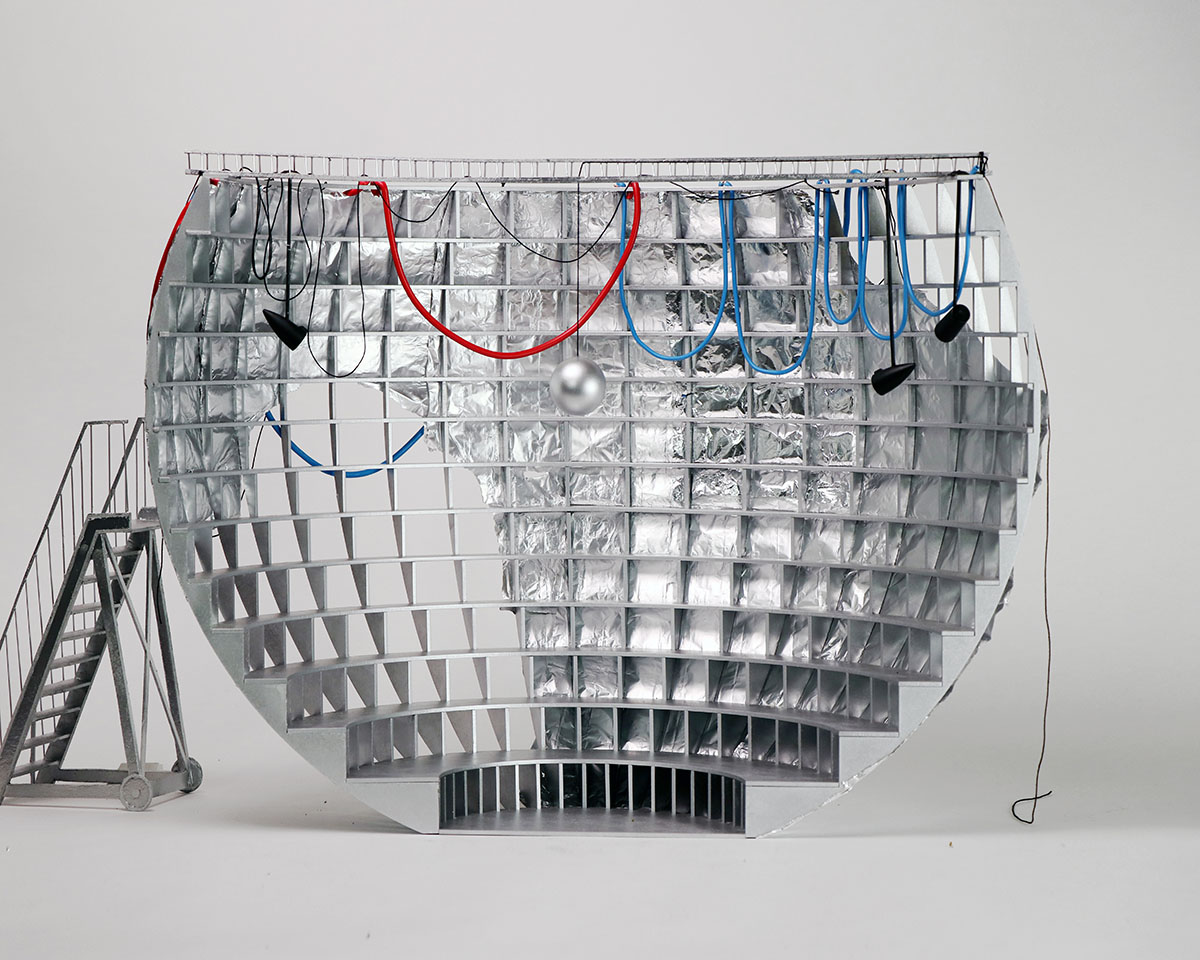
The French Pavilion will bring the Ball Theater to be "a laboratory of identities, places and imaginaries" to the 2023 Venice Architecture Biennale which will open to the public on Saturday 20 May, 2023 at the Arsenale and Giardini venues.
Themed as Ball Theater, the exhibition, curated by architecture firm Muoto, in partnership with Georgi Stanishev and Clémence La Sagna for the scenography, associate curator Jos Auzende, and Anna Tardivel for the programming, will bring an original and open response to the questions and challenges raised by this biennale's theme The Laboratory of the Future.
The Venice Architecture Biennale 2023 will take place from Saturday 20 May to Sunday 26 November, 2023 at the Arsenale and Giardini venues.
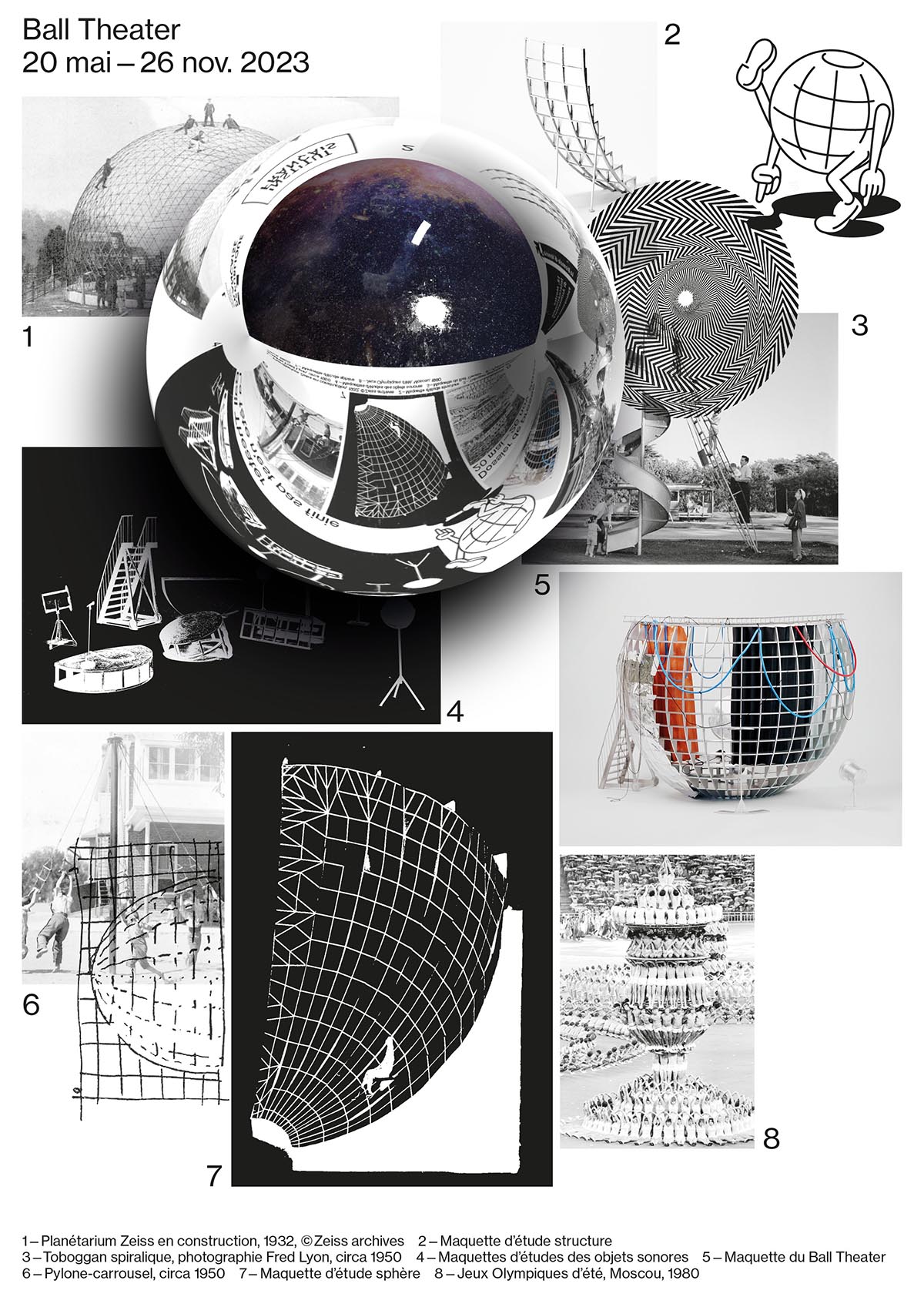
Ball Theater. Image © Spassky Fischer
In response to Lesley Lokko's theme, "The Laboratory of the Future", the team reinterprets their view and understanding of architecture by creating it a performance space through the use of both theater and sound.
The Ball Theater is aimed to be both "a laboratory of identities, of places and of imaginaries," and "a device that enables people to project themselves into elsewheres and into the future."
The artistic team intends to create an architecture that offers visitors an experience that is simultaneously spatial, aesthetic and acoustic.
"Thanks to its capacity to influence our vision of the world, to work on different scales, to connect the material and immaterial dimensions, architecture is a discipline and a language that is particularly conducive to experimental approaches," said Catherine Colonna and Rima Abdul Malak, Minister for Europe and Foreign Affairs and Minister of Culture.
Ball Theater. Image © Muoto + Stanishev et La Sagna
The Ball Theater exhibition, dubbed as Original, will be an architecture of sound, a space that visitors can move through and contribute to with their movements and their speech. The exhibition itself, described as "a creative exercise", will also be an architecture that turns into an invitation to travel.
"As an object, the sphere is striking in its materiality, yet at the same time its polysemic nature transports us to a multiplicity of imaginative possibilities," Colonna and Malak added.
According to the team, it is also Open, because in the plurality and diversity of bodies and voices, the space will act like "an echo chamber, a place of listening and perhaps of meditation, as well as a laboratory of identities." Open too because, by drawing on the profoundly ritualistic nature of theater, Ball Theater will become a place of celebration and collective experiment.
Ball Theater. Image © Muoto + Stanishev et La Sagna
Through the different “balls” in it, the theater will host a series of performative events between June and November during the Venice Architecture Biennale.
According to team, these balls also reference to the history of Ball Culture, a movement that grew up in Harlem in New York City in the 1920s and 1930s where the balls were utopian spaces of resistance, dance and celebration for the African-American and Latino LGBT communities, a response to racism and homophobia.
The life of the Ball Theater alternates between times of contemplation and times of activity. The first ball will correspond to the ordinary life of the Venice Architecture Biennale 2023 when visitors move through its ghostly soundscape.
The second will be a ballroom time when the party idea ceases to be metaphorical and becomes literal and real.
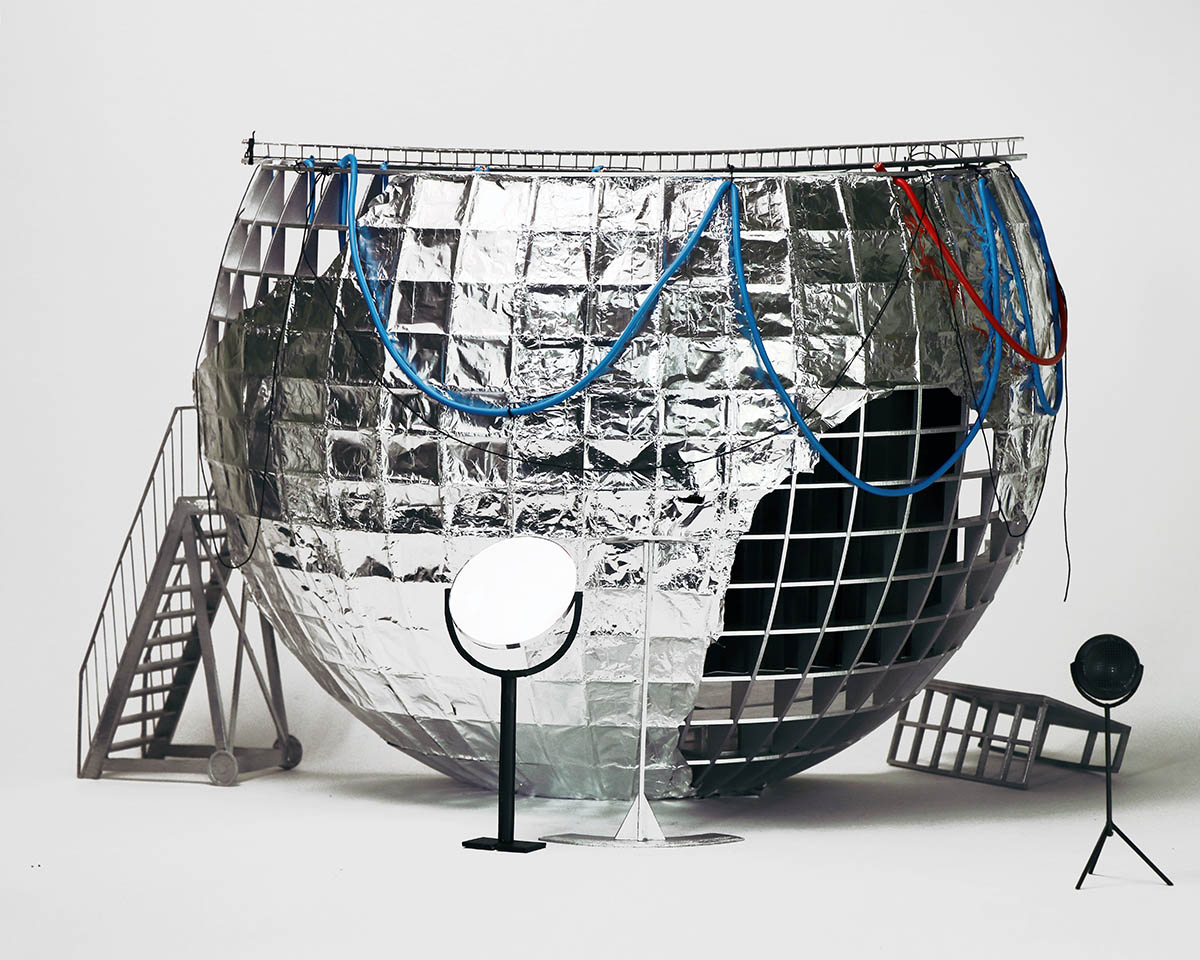
Ball Theater. Image © Muoto + Stanishev et La Sagna
The programming of these balls aims to raise current questions about the fragility of the planet, about our colonial heritage, and about our representations of identity, norms and gender. In this way, the Ball Theater will bring together two imaginaries: the utopia and the party—around a shared goal: the quest for collective emancipation.
The Ball Theater project was selected through a competition organized by the Institut français on behalf of the Ministry of Culture and the Ministry for Europe and Foreign Affairs.
Ball Theater invites visitors to enjoy a sensory experience, a theater-architecture, a scenographic and auditory composition that is open to the world and receptive to its concerns, whether ecological or societal.
Ball Theater. Image © Muoto + Stanishev et La Sagna
Above all, the theater is aimed to be an immersive and experimental space, a place where multiple practices interact, occupied and inhabited for a week regularly by researchers, students, artists, and thinkers, who will turn the Pavilion into an animated arena of celebration, experiment, and discussion.
In line with the goals of the Paris Agreement, the French Pavilion also promotes low-carbon initiative and practices. To echieve this, the Institut français, organizer of the French pavilion, has employed a low-carbon measurement tool to reduce the impact of its projects. According to its study, the production of materials and travel are the two leading sources of emissions.
"The Ball Theater project tackles these challenges through a number of strategies," said the organizers.
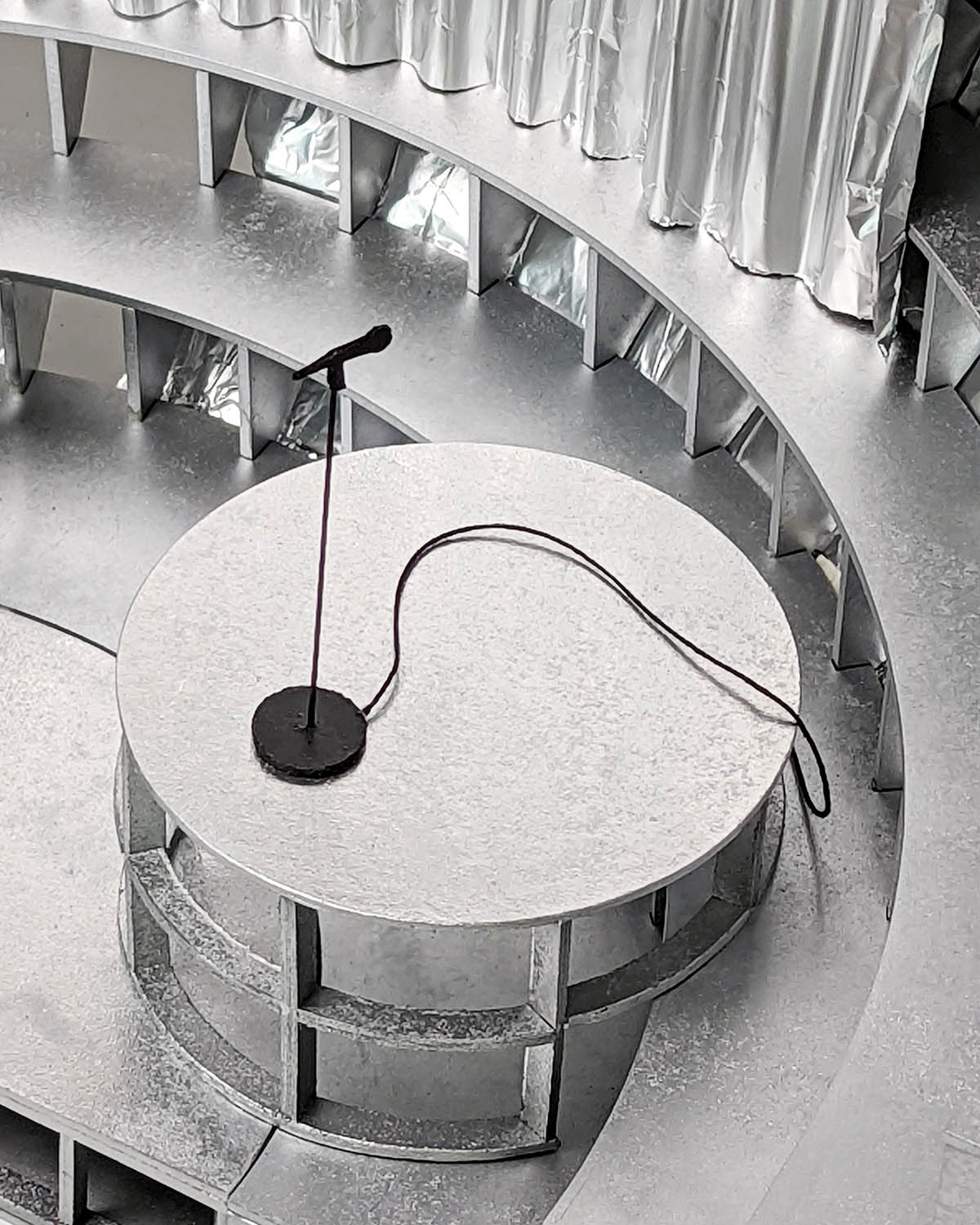
Ball Theater. Image © Muoto + Stanishev et La Sagna
For this reason, the project advocates "frugality", bringing a light and modular architecture, reversible assemblages, local production, economic use of materials to the biennale.
The Ball Theater is envisioned as a reusable object, while it can travel to anywhere. The theater is made of wood and steel composition of the seats which are light, modular and collapsible.
The team employs a low-tech, modular construction, requiring a minimum of materials. The structure can be easily assembled and disassembled.
When visitors enter the pavilion, the first thing visitors see is the exterior of the half-sphere, surfaced with a layer of silvered aluminum. The object appears looks immense.
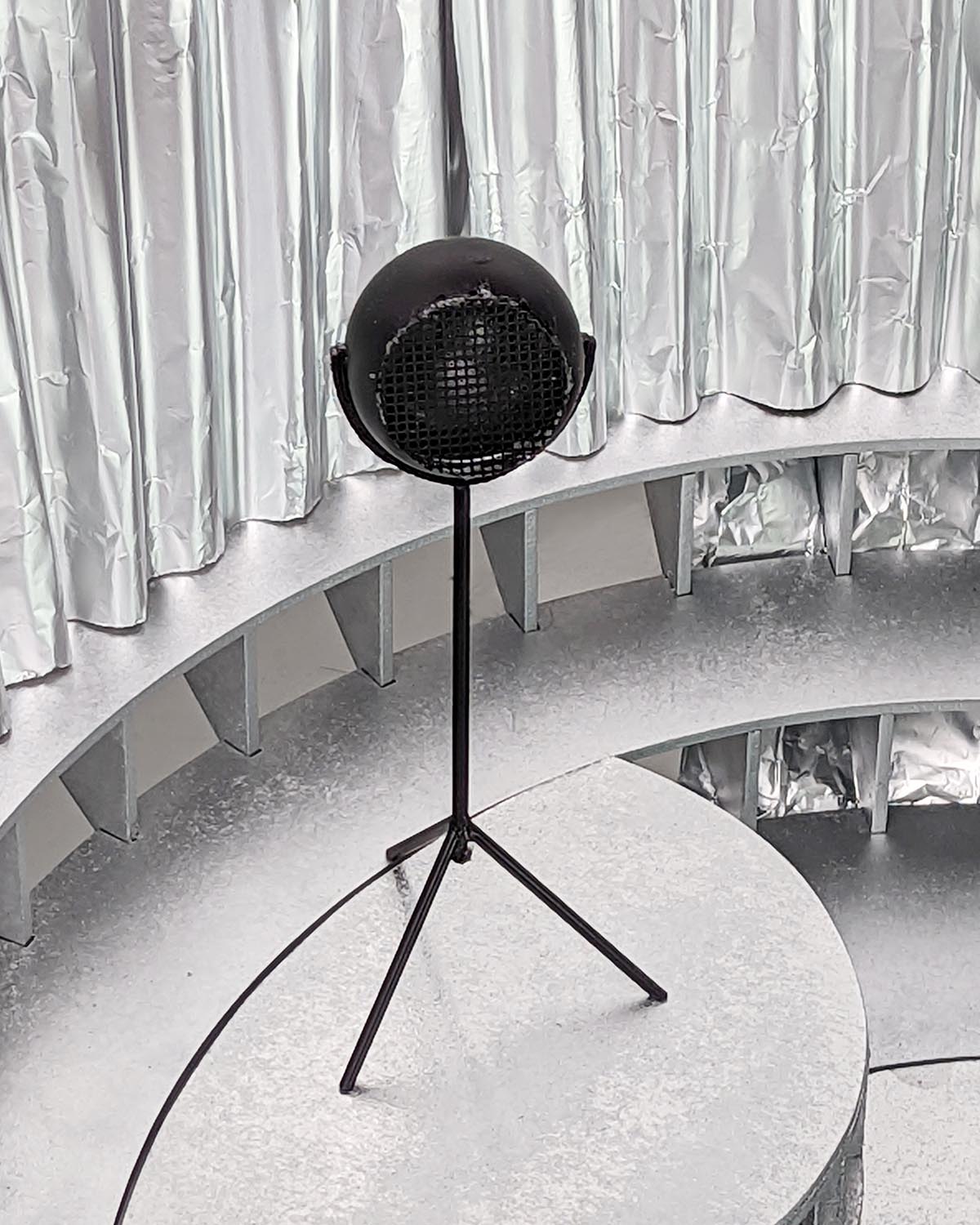
Ball Theater. Image © Muoto + Stanishev et La Sagna
One wonders how it managed to get in here. As they move around it, visitors encounter a hollow interior, a steel structure, tiered plywood seating, a silvered fabric curtain and a stage with an active microphone.
Above the whole structure hangs a triangular beam supporting a few projectors. The virtual circle of the sphere is interrupted by a stool and two tiered seats. The lower part of the stage can be configured in different ways, with a low, circular, movable podium where the public can sit and have access to the middle of the stage, as well as a higher platform for the guest artists.
The design is intended to travel and can be set up in other places to host future events after the biennale is closed. The goal of the project that the theater should ultimately be acquired by one of the institutions that host it on its post-Biennale Architecture 2023 tour.
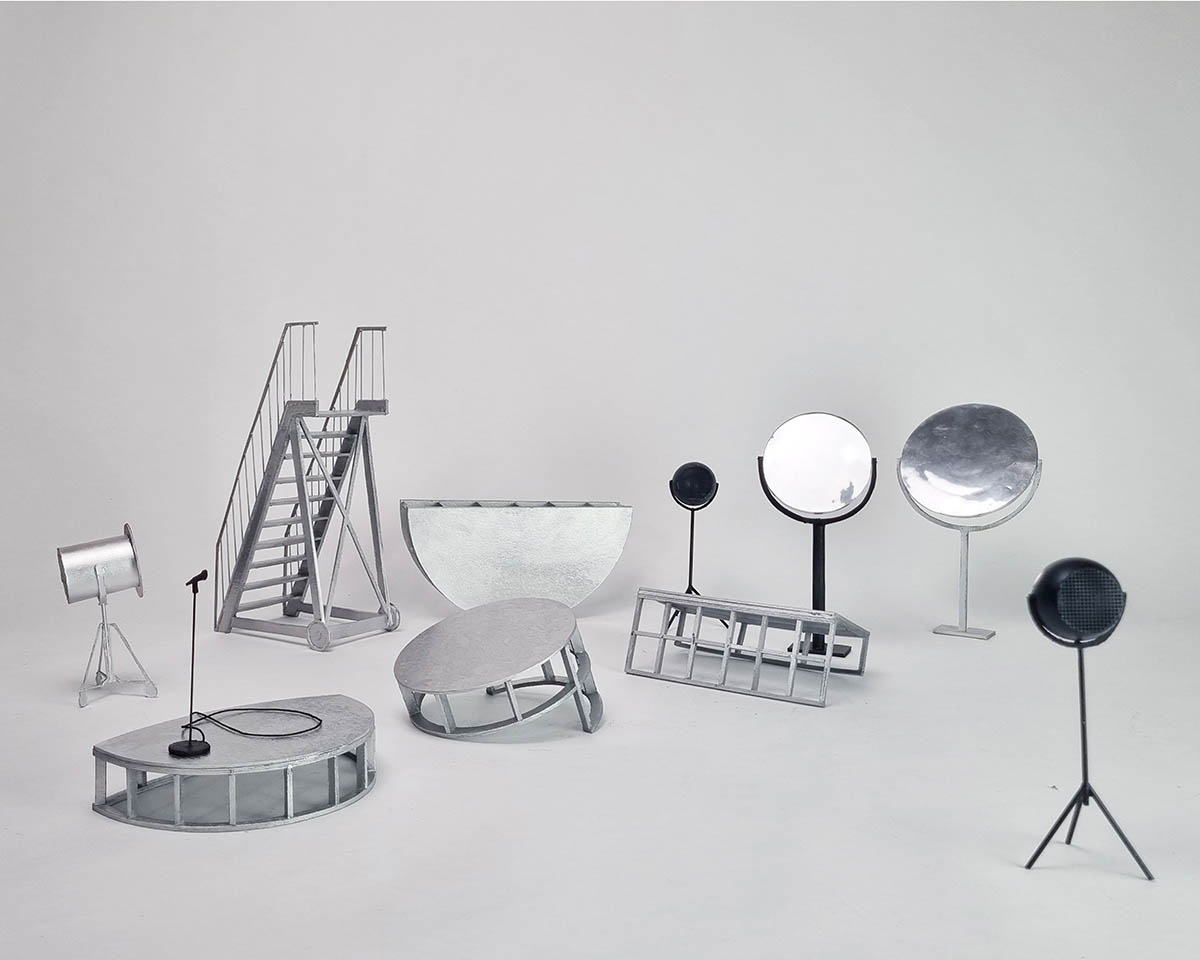
Ball Theater. Image © Muoto + Stanishev et La Sagna
The second strategy was to promote local production. The whole installation is produced by craftsmen from the Venice region in order to reduce material mileage. The half-sphere is made of fine steel plates: 21 meridians and 13 parallels, which break down into 300 bolted segments. The structure is reinforced by props mechanically fixed to the outside of some of the meridians to keep the structure light.
The half-sphere sits on a circular turntable, with a base of silver-painted plywood boards. A technical gantry fixed to the last parallel is used to hang spotlights, loudspeakers and a sliding curtain.
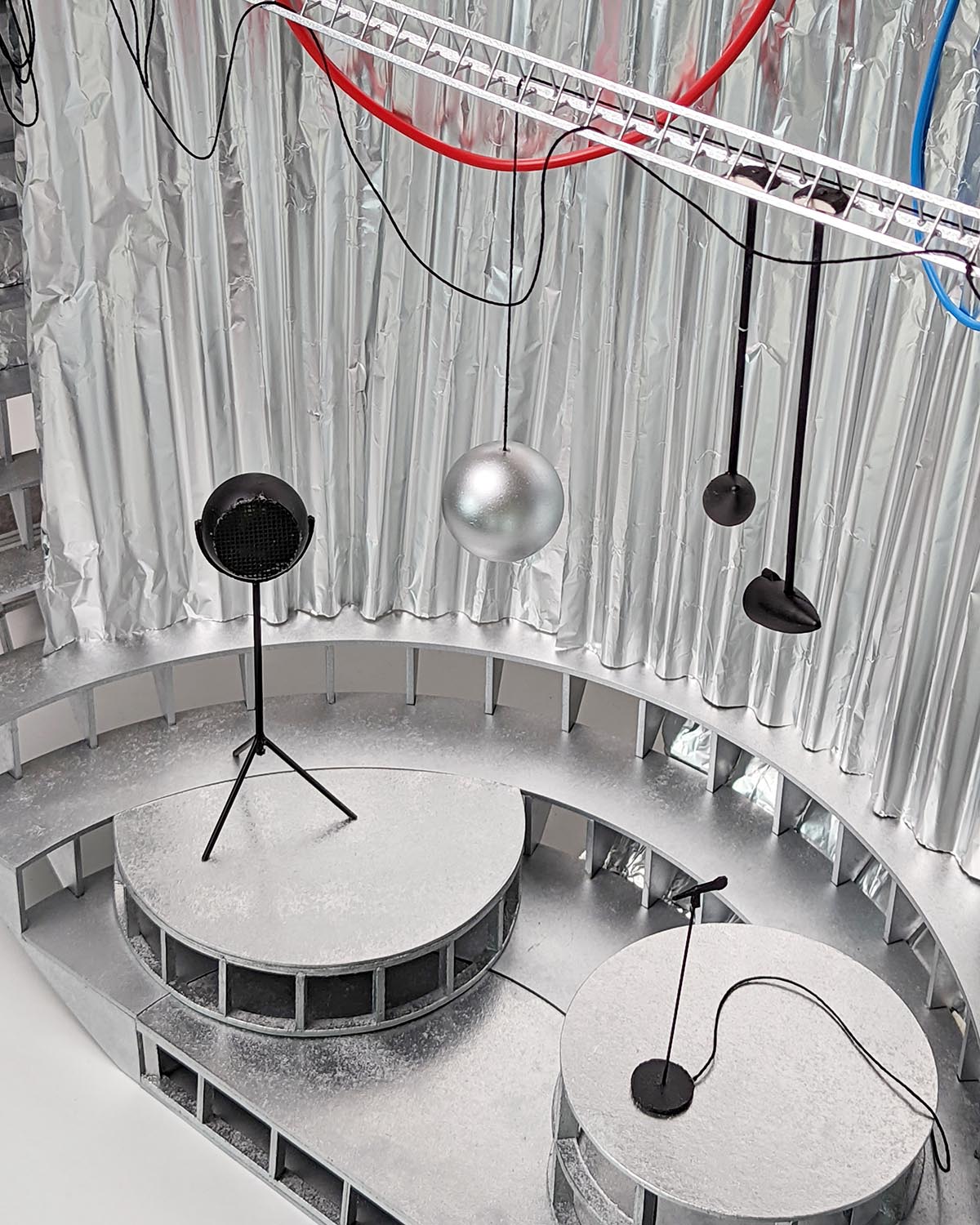
Ball Theater. Image © Muoto + Georgi Stanishev et Clémence La Sagna
At the same time, visitors see a series of objects in the adjacent rooms, expressing a strange kinship with the half-sphere. They suggest a temporary camp, somewhere between a picnic area and a playground.
For example, there is a sort of maypole that makes a repetitive sound, as well as recovered metal objects that could be used to equip the theater – a spinning top, a cable drum, a mirror, a stool, etc.
This stage, made up of recovered and recycled objects, reflects our conflicting feelings of hope and nostalgia, our desire to reconstruct a future with what remains of the past.
Ball Theater. Image © Muoto + Georgi Stanishev et Clémence La Sagna
Ball Theater. Image © Muoto + Georgi Stanishev et Clémence La Sagna
Ball Theater. Image © Muoto + Georgi Stanishev et Clémence La Sagna
The theme of the 18th Venice Architecture Biennale is The Laboratory of the Future curated by Lesley Lokko.
The Venice Architecture Biennale 2023 will take place from Saturday 20 May to Sunday 26 November, 2023 at the Arsenale and Giardini venues.
Several pavilions will showcase challenging themes and exhibitions, including Danish Pavilion's Coastal Imaginaries, curated by Josephine Michau, Korean Pavilion's 2086: Together How?, Austrian Pavilion's PARTECIPAZIONE / BETEILIGUNG, Spanish Pavilion's Foodscapes, Bulgarian Pavilion's Education is the Movement from Darkness to Light, Hungarian Pavilion's Reziduum – The Frequency of Architecture, Belgian Pavilion's In Vivo.
Read more about WAC's coverage about pavilions on Venice Architecture Biennale 2023.
Top image: Ball Theater. Image © Muoto + Stanishev et La Sagna.
> via French Pavilion
